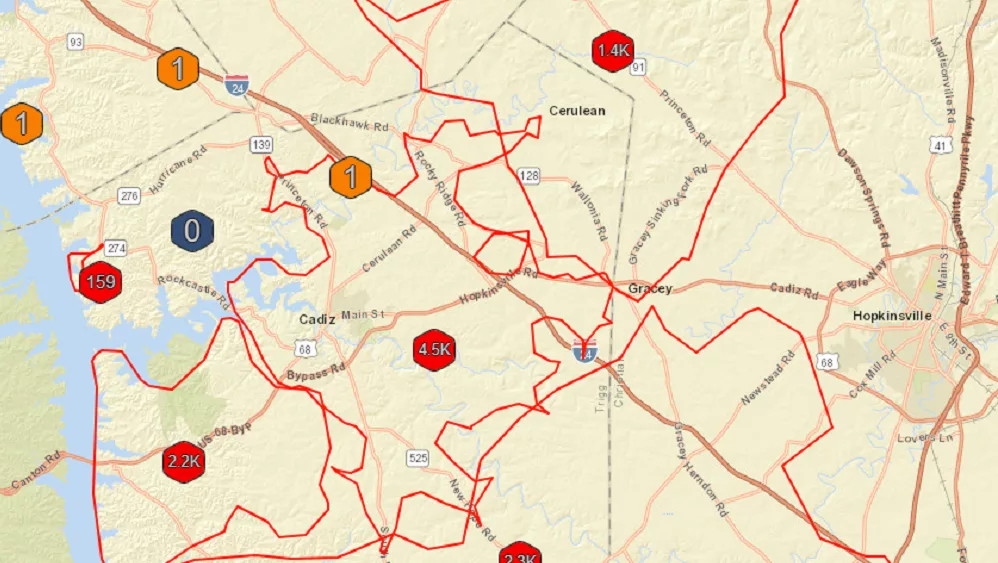Kelly Jackson
Christian County Extension Office
Little Lichens
One natural oddity that often concerns gardeners are the grayish-green ‘fungus’ growing on the branches and trunks of many of their landscape trees and shrubs. The major concern is that these growths are killing the plant and homeowners want to know how to remove them. The growths are called lichens and they grow profusely in our warm, humid weather. They are often blamed for death or decline of various woody plants but in truth, lichens have nothing to do with a dying plant.
Lichens are an intriguing organism unlike any other. Most of the lichen is composed of a fungus, but living among the fungal threads are the cells of green or blue-green algae. The algae produce food, shared with the fungus, through photosynthesis. Some algae can also produce nitrogen obtained from organic debris. The fungus supplies water, obtains minerals from rain or organic debris, and provides shelter and protection for the algae. This symbiotic union benefits both partners and produces a long-lived organism that can thrive in some of the harshest environments on earth.
Lichens grow very slowly and are able to ‘hibernate’ during unfavorable conditions. Lichens found on trees generally are circular and scattered on the bark. However, not all lichens are the same. Color and growth habit is often used to classify the more than 20,000 kinds of lichens found worldwide. They are generally defined as three types:
- Foliose – These lichens produce slightly raised, leaf-like folds that are gray- green in color and commonly found on trees. They become rubbery when wet.
- Crustose – Colorful lichens, some are bright orange or yellow, with a flattened body often found clutching to rocks.
- Fruticose – This lichen produces highly branched structures with hair or finger-like projections.
A large mass of lichen is actually several bodies that have grown together. They reproduce when small fragments break off of the body and are spread by wind, splashing water, insects, or animals to a suitable site. They may also appear if the fungal partner produces spores that germinate near compatible algae.
Lichens are found on almost any stable and sunny surface. Rocks, tombstones, fence posts, soil, tree trunks, and branches are all suitable sites. They grow profusely on trees and shrubs with dead limbs or badly thinned canopies. This is often why they are blamed for a tree’s decline. However, since lichens manufacture their own food, they are not considered pests. They are there simply to take advantage of the sunlight exposure. Decline of the tree is more likely due to stress, drought, diseases, or insects. A thick covering of lichens on a twig or branch may interfere with gas exchange and cause further decline, but removing the lichens will not save a declining tree.
Nevertheless many people want lichens removed. Physically removing lichens by raking, scraping, or scrubbing from a declining tree is successful, but they will likely reappear. Your best option is to maintain healthy trees through proper establishment, watering, and fertility practices which promote a thick leaf canopy that inhibits lichen growth on trees.
Lichens play an important role in the environment. Their presence is generally an indicator of good air quality as they cannot survive areas with high levels of ozone, sulfur dioxide, acid rain, or other air pollutants. Lichens are also beneficial to nature, providing refuge to spiders, mites, and other insects, are a food source for deer, and are used as nesting material for more than 50 species of birds. Some lichens are edible for humans, many are used for making dyes, and drug companies are using some types for making antibiotics. Perhaps this article will shed a little light on lichens and create a more favorable opinion of this unique organism.
Educational programs of Kentucky Cooperative Extension serve all people regardless of race, color, age, sex, religion, disability, or national origin.
UNIVERSITY OF KENTUCKY, KENTUCKY STATE UNIVERSITY, U.S. DEPARTMENT OF AGRICULTURE, AND KENTUCKY COUNTIES, COOPERATING






